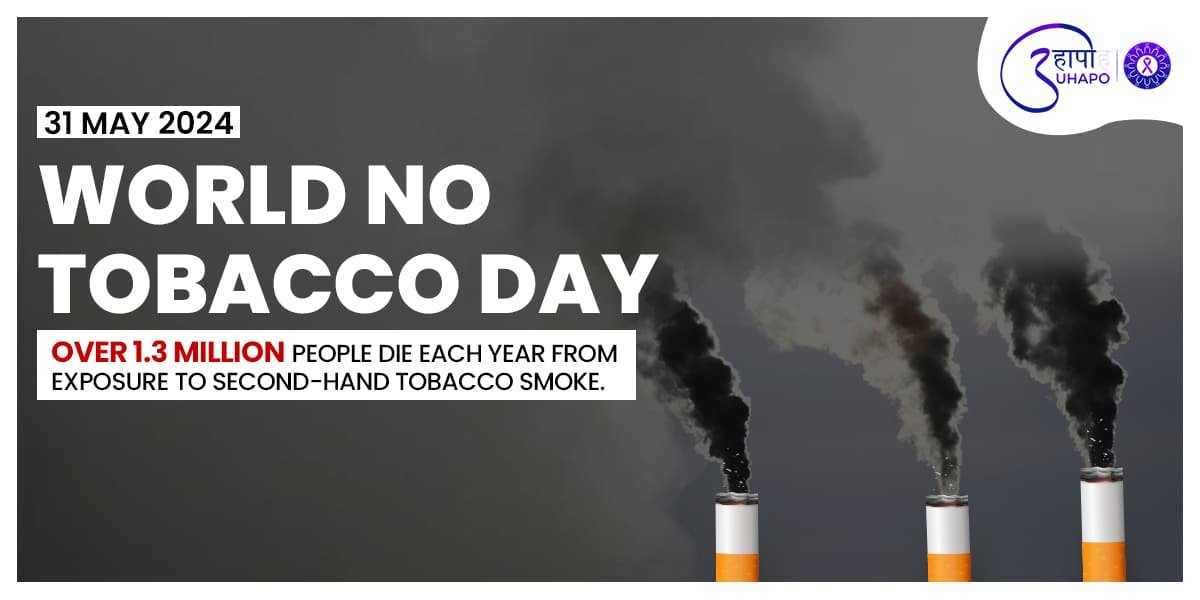World No-Tobacco Day – Say No to Tobacco: Spreading Awareness and Encouraging
World No-Tobacco Day is a globally recognized event, held every year on the 31st of May, an initiative pioneered by the World Health Organization (WHO). It is the day when people all over the world raise awareness about the threats associated with tobacco use by promoting effective public policies aimed at decreasing tobacco consumption. With more than 8 million deaths due to tobacco-related illnesses each year globally, it is impossible to exaggerate the importance of this campaign. Our focus will be on World No-Tobacco Day, why tobacco is bad, and what can be done collectively to ensure a tobacco-free society in our blog.
The Significance of World No-Tobacco Day
WHO launched World No-Tobacco Day in 1987 to alert the world community about the catastrophic consequences of the uncontrolled spread of tobacco and deaths, and its causes. The campaign has a theme each year developed with an approach to focus discussion worldwide. The recent themes were “Commit to Quit” which gave smokers the courage to make attempts to quit smoking and “Protecting Youth from Industry Manipulation” which focused on methods used by tobacco companies to attract young people into smoking cigarettes.
This observance is multifaceted to educate the public on the hazards of tobacco, fight for implementation of policies aimed at reducing tobacco use, and inspire individuals to live healthier lives. By outlining the tactics employed by the tobacco industry, the campaign aims to dispel the myth that smoking is a result of social consequences.
The Dangers of Tobacco
Tobacco stands as one of the major causes of sickness and death all over the world. It is responsible for a multitude of ailments such as lung cancer, heart disease, stroke, and Chronic Obstructive Pulmonary Disease (COPD). The chemicals present in tobacco smoke are harmful to nearly every part of the human body resulting in massive damage over time. Moreover, passive smoking represents a grave danger to non-smokers including children who often involuntarily inhale cigarette smoke.
The fact that nicotine is the addictive ingredient in tobacco poses a great obstacle to quitting smoking. Despite the well-known dangers, the addictive properties of nicotine make sure that a considerable number of people stay attached to this habit, which results in a continuous cycle of dependence and health issues. Besides, novel products like e-cigarettes and vaping devices are also blamed for public health problems that have come into existence recently. Although they are often advertised as less harmful alternatives, such goods still cause health issues and create addiction to nicotine, especially among adolescents.
Raising Awareness Through Education
Education is one of the crucial components in the fight against tobacco. Public awareness campaigns become an essential tool in changing perspectives about the use of tobacco. Workplaces, schools, and community groups can be utilized as a forum for disseminating information about smoking hazards and the advantages of quitting it. Youth-focused programs represent a key area where resources should be invested.
There is evidence suggesting that almost all smokers commence their smoking habit before turning 18 years old. By letting young individuals know about ailments related to tobacco use and teaching them how to withstand peer pressure we can effectively prevent initiation of smoking among youth by promoting healthier future generations. Anti-smoking campaigns that use graphic imagery and personal stories can be particularly effective in conveying the harsh realities of tobacco use.
Encouraging Change: Policy and Support
Effective tobacco control requires policies and comprehensive support systems. Governments play a pivotal role in this regard by implementing measures such as higher taxes on tobacco products, comprehensive bans on tobacco advertising, and smoke-free public spaces. These policies not only reduce the prevalence of smoking but also protect non-smokers from exposure to secondhand smoke.
Support systems for quitting are equally necessary in encouraging vital change. Nicotine replacement therapies, counseling, and quitlines provide essential resources for individuals attempting to quit smoking. Employers and healthcare providers can support smoking cessation by creating smoke-free environments and offering cessation programs.
The Power of Community and Advocacy
Community support and advocacy are powerful tools in the fight against tobacco. Grassroots movements can drive significant change by mobilizing communities, advocating for policy changes, and supporting individuals in their quit journeys. Non-governmental organizations (NGOs) and community groups can amplify the message of World No-Tobacco Day by organizing events, workshops, and campaigns that promote tobacco-free living.
Social media has also become a valuable platform for spreading awareness and encouraging public discourse on tobacco control. Hashtags like #WorldNoTobaccoDay and #TobaccoFree can help create a global conversation, allowing individuals to share their experiences, support each other, and advocate for stronger tobacco control measures.
The Role of Healthcare Providers
Healthcare providers are on the front lines of the battle against tobacco. They have the opportunity to directly influence patients’ smoking behaviors through education, counseling, and support. Routine screening for tobacco use and providing resources for quitting should be integral parts of healthcare practice. By addressing tobacco use consistently, healthcare providers can help reduce the burden of tobacco-related diseases.
Conclusion
World No-Tobacco Day is more than a symbolic observance, it is a call to action for individuals, communities, and governments worldwide to recognize the dangers of tobacco and take decisive steps toward a tobacco-free world. The battle against tobacco requires a multi-faceted approach, encompassing education, policy, support systems, and community advocacy.
By spreading awareness and encouraging change, we can protect future generations from the devastating effects of tobacco. Let us all commit to saying no to tobacco, not just for a day, but for a lifetime, creating a healthier, smoke-free world for all.


5 Replies to “World No Tobacco Day – Say No to Tobacco: Spreading Awareness and Encouraging”
December 13, 2024
August 6, 2025
December 30, 2024
August 9, 2025
August 11, 2025